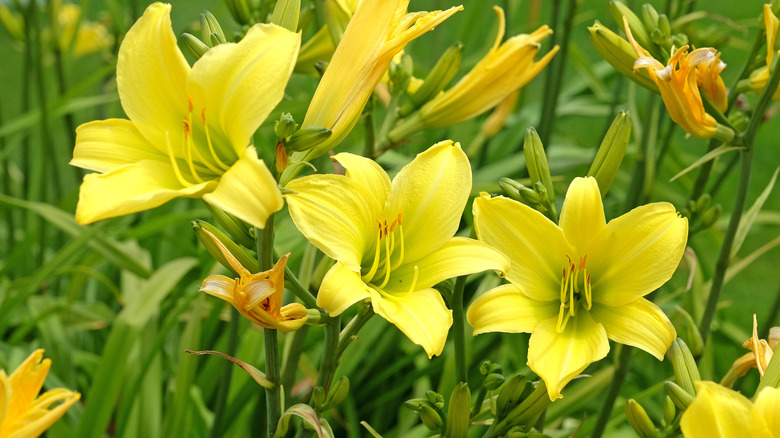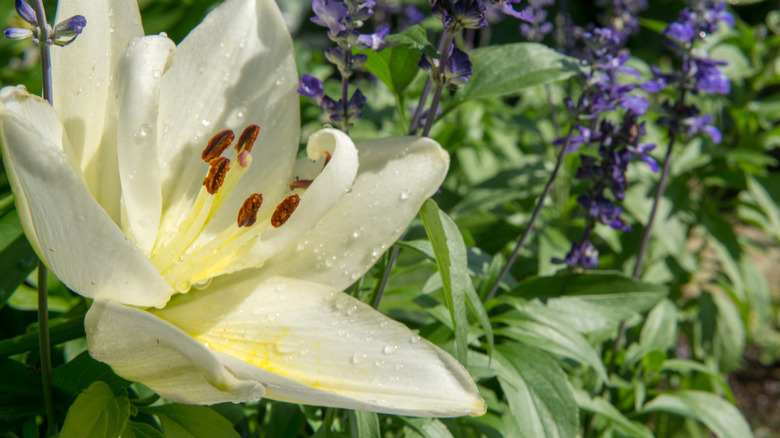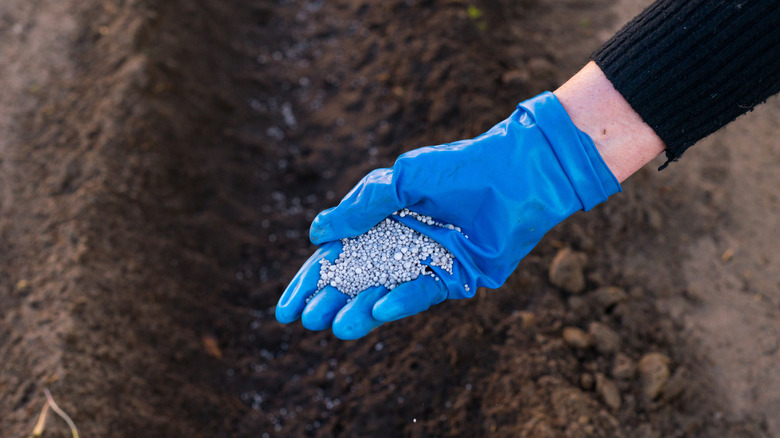The Best Way To Fertilize Daylilies For More Vibrant Blooms
Daylilies are a favorite among many gardeners, and for substantial reasons too. Apart from being the perfect pair for most spring bulbs, daylilies also belong to that invaluable class of garden plants that demand very little of you, and yet, go on rewarding you with their breath-taking blooms year after year. But that doesn't mean you can't take the extra step and learn how to really care for daylilies to make sure the blooms come out all the more vibrant and colorful, especially if your garden soil is not too generous towards them. You can do this by fertilizing them the right way, which is, to keep it simple: Feed them during their growing season and use a balanced fertilizer.
The daylily, (Hemerocallis spp.) is a Eurasian perennial native known for its extreme hardiness and adaptability, which is also represented by as many as 80,000 of its registered cultivars around the world. Not known for 'thriving on neglect' for nothing, some daylilies can easily become a bother too, so you need to watch out for their invasiveness. For instance, a species like the ditch lily (Hemerocallis fulva) can be quite difficult to evict once it takes a liking to your garden! During their blooming period, daylily clumps can produce as many as 400 flowers in the entire season, where each flower lasts about a day (hence, the name) and gets replaced by another one as soon as it dies. The good news is that these flowers can be made to bloom throughout the summer — all you need is a little thought into choosing the right cultivars and feeding them correctly.
The best time to fertilize daylilies
Daylilies are not super fussy about their fertilization needs, and in most cases, would gladly thrive in regions that are moderately fertile. You don't need to fret too much about their feeding schedule either. Having a healthy dose of a relatively balanced fertilizer with an N-P-K ratio close to say 10-10-10, ready for them around early spring, is enough work for the entire year. If you're using a slow-release fertilizer, make sure your plants get enough moisture during dry spells so that their roots can take up the nutrients as needed.
Although we said that once a year application is good enough, if you can, give them a second feed after they bloom to get even better flowers the subsequent season. Just make sure you stop feeding the plants about a month prior to the first hard frost to avoid the risk of plant injury. You must also be wary of the evils of excessive nitrogen in the fertilizer, which will kill your chances of having more flowers. According to horticulturist David Trinklein from University of Missouri Extension, too much foliage development and little flowering, is a telltale sign of over-fertilization in daylilies.
Best practices for fertilizing daylilies
If you only have a handful of daylilies in your yard, all you need is a couple of teaspoons of granular fertilizer sprinkled near their base. Otherwise, you can broadcast it if you have a bigger area to cover. Wash off any residue fertilizer from the leaves after you're done to avoid leaf burn. Watering requirements are also going to vary depending on the type of fertilizer you are using. In case of a water-soluble fertilizer, water the soil before the application, whereas, do it afterwards for a granular one to avoid fertilizer burn.
You can always opt for a slow-release fertilizer or an organic option as well, such as compost or aged manure, to score some points for the environment while caring for your plants. Additionally, deadheading is fruitful for boosting flower count in reblooming cultivars, such as 'Stella de Oro'. Considering their affinity for alkaline soil, you can also try to give daylilies a blooming boost with a natural kitchen ingredient, like baking soda.


